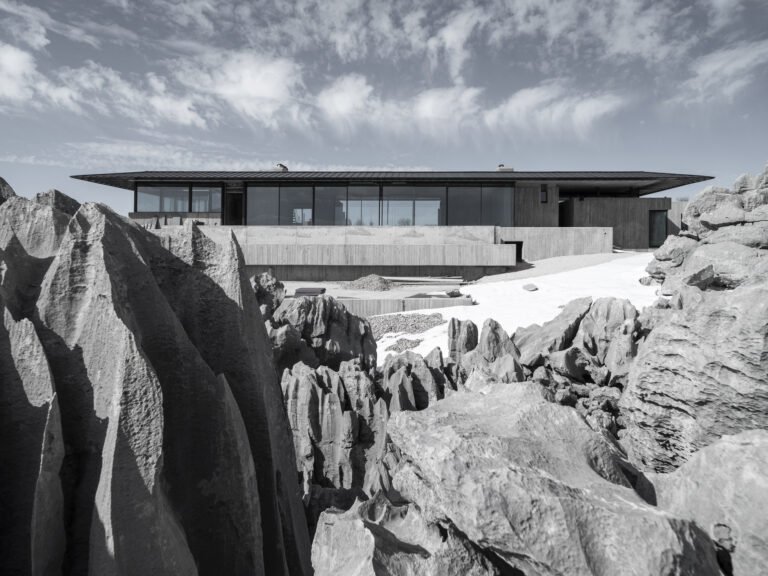A Patio Floor Painting Tutorial Fit for a DIY Novice
Consider a repeating pattern with the same scale all the way through. “The best design for this type of project is something with uniformity,” says Cox, who opted for a pattern with a series of squares and rectangles that was similar to the one in the Portuguese castle. “Having any kind of zigzag pattern or irregularly shaped forms would have added to the difficulty level,” she explains. After landing on a design, she decided to go with blue and white. “I am a traditionalist at heart, and I wanted the porch to play off a quintessential black and white checkerboard design,” Cox says.
“My interpretation of the Palace of Pena floor really represents my mishmashed personal aesthetic of classic and theatrical with a dose of ancient castle or Streamline Moderne bus stop, depending on the day,” Cox adds. Eisenhart recommends exterior paint made specifically for porch and patio spaces. “When paint has enamel properties in it, it allows for a protective shell that lends itself to weather and wear and tear, especially in high-traffic areas like a patio floor,” Eisenhart says. “Paint with a bit of a sheen, like eggshell, will allow for easy spot cleanup in case of spills or scuffs.” Alternatively, an exterior latex paint would work too.
Step 2: Prep the space
“The prep work is key when painting floors,” Eisenhart says. “It is important to have a very clean surface, sweeping and then lightly sanding the areas to help the paint adhere.” Once cleanup is done, wipe down and let the patio dry overnight. Secure the window screens with plastic drop cloths to keep the debris from settling onto wet paint and messing up the work in progress. “Protecting from dust during the painting is critical,” Eisenhart says. Cox used Frog Tape to ensure everything was secure.
Step 3: Lay out your design
Cox freehanded her pattern on the floor in pencil, measuring each shape with her ruler. “The mistake I made was not drawing it out or sketching out the scale and layout in the room before I started laying out the pattern on the floor,” Cox laughs, referring to her faux pas that ended up with a few incomplete square patterns. Lesson learned. Eisenhart recommends a vinyl stencil for the shapes you plan to use on the floor, then tracing around the pattern. If you’re going the stencil route, paint the background color first, then paint the pattern on top.


